Learn how to make hot and chewy Kinako Mochi at home with roasted soybean flour, sugar, and packaged plain mochi. It’s one of the most popular ways to flavor Japanese rice cakes for a quick and delicious snack during Japanese New Year—or anytime!
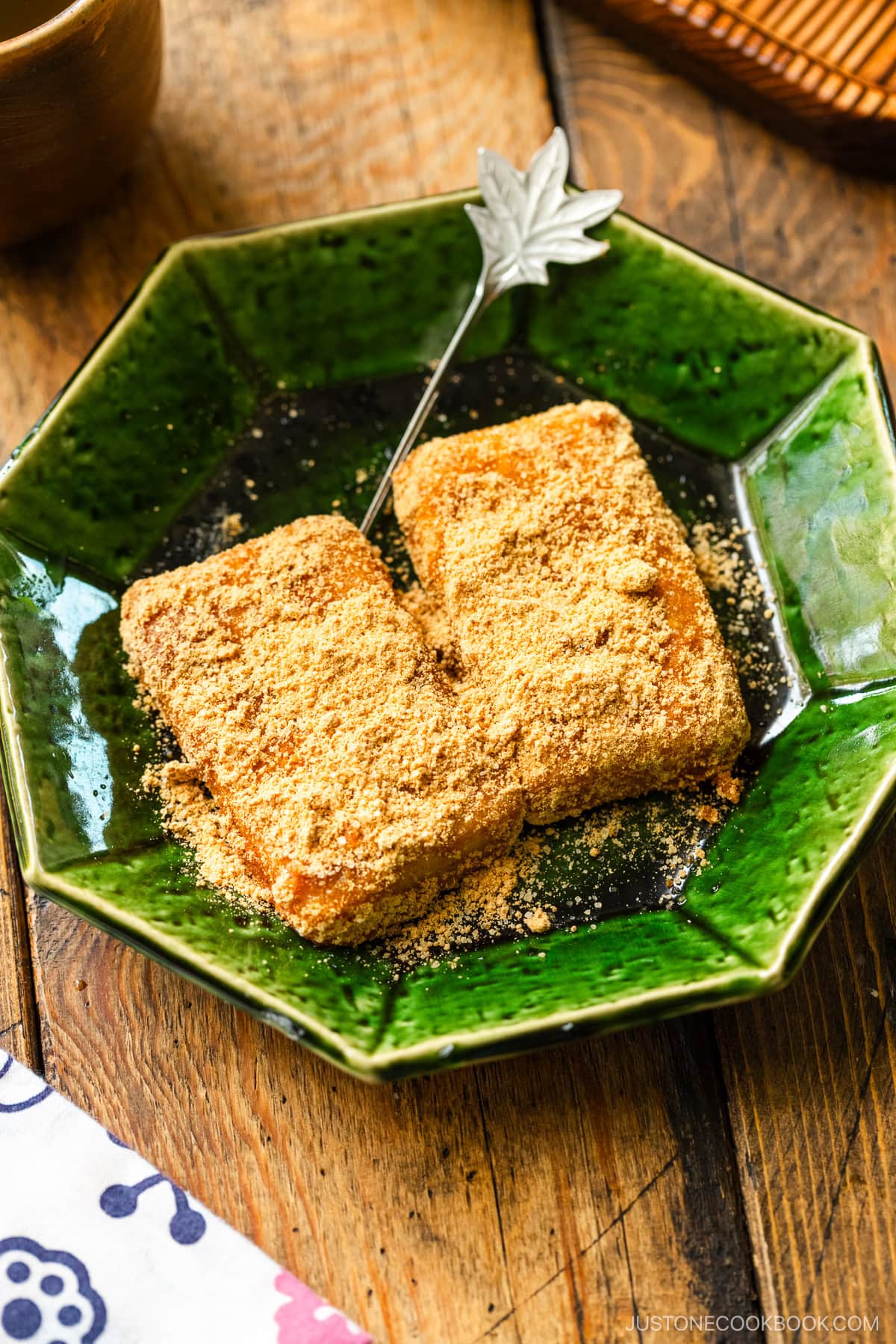
Growing up in Japan, I eagerly anticipated eating Japanese rice cakes in the colder months and especially during Japanese New Year. Today’s recipe—Kinako Mochi (きな粉餅) or Rice Cake with Soybean Flour—is one of the most popular ways to enjoy traditional Japanese mochi. I’ll show you how to use dried, plain mochi from your pantry to make this delicious snack anytime in just minutes!
If you’re craving more Japanese rice cake recipes, try my Udon Noodle Soup with Toasted Mochi, Zenzai (Sweet Red Bean Soup with Mochi), and Ozoni – Japanese New Year Mochi Soup next!
What is Kinako Mochi?
Kinako mochi (Soybean flour mochi) is plain Japanese glutinous rice cakes coated with roasted soybean flour called kinako that’s sweetened with sugar. Literally “yellow flour,” kinako is a fine powder that tastes similar to roasted peanuts. The Japanese sweeten this nutty ingredient to use in various traditional and modern Japanese desserts. This is a classic way that the Japanese prepare traditional rice cakes to highlight their chewy, dense, sticky, and supremely satisfying qualities.
Why I Love This Recipe
- It takes just 3 ingredients – All you need is mochi, kinako, and sugar for a filling and satisfying treat anytime!
- Uses dried mochi for the ultimate convenience – I use shelf-stable kiri mochi (Kirimochi, sometimes kirimochi) from the grocery store. It’s the next best thing to fresh and so easy to use! Cut, dried, and individually wrapped, it’s what Japanese households use when preparing mochi at home. I always stock it in my pantry to make mochi snacks, sweet red bean soup, and hot pot.
- It’s quick and simple to make – Just boil the mochi and dredge it in a mixture of kinako and sugar. It takes just minutes to prepare.
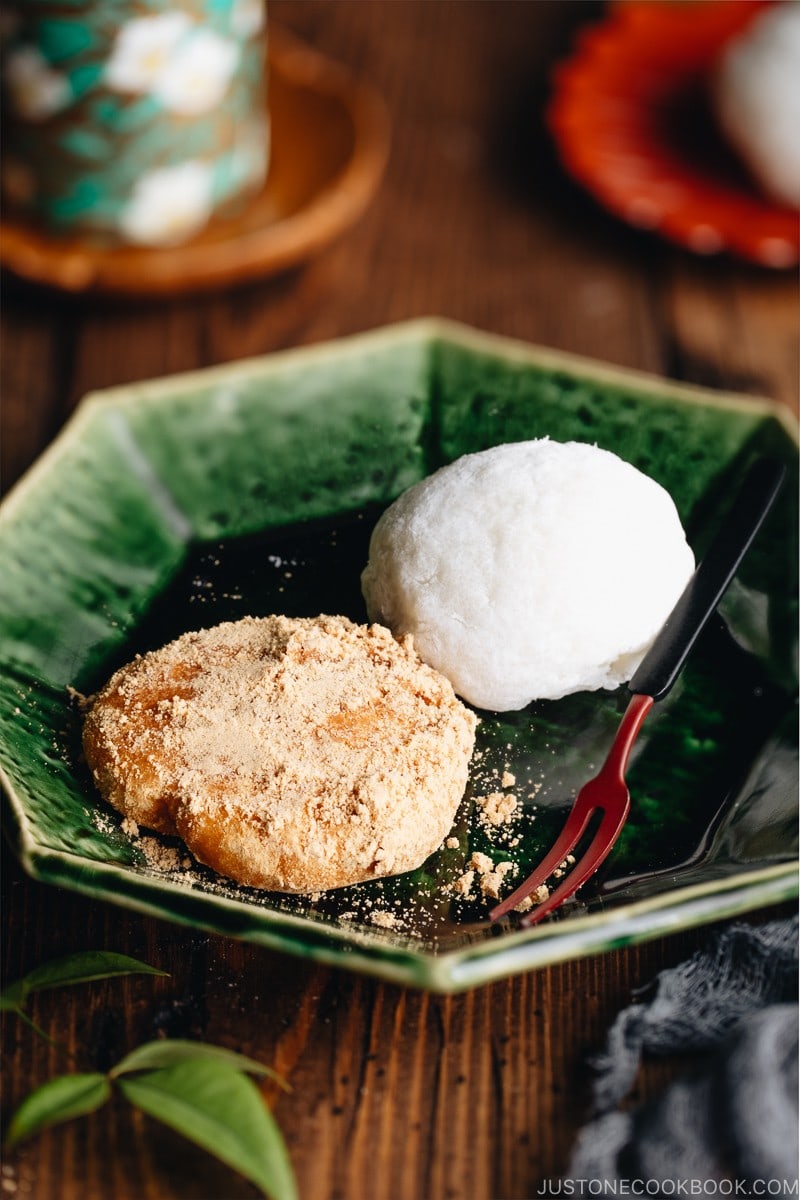
Ingredients for Kinako Mochi
- Kiri mochi (dried and packaged plain rice cakes)
- Kinako (roasted soybean powder or flour)
- Sugar
Find the printable recipe with measurements below.
Substitutions
- Kiri mochi – Literally “cut mochi,” this is a convenient, shelf-stable product that’s readily available year-round at Japanese grocery stores or on Amazon. The cut and dried pieces are individually wrapped and keep for a long time. You can substitute it with freshly pounded mochi or you can make it homemade with a stand mixer; see Variations below for details. You can learn more about this traditional Japanese food in my What is Mochi? post.
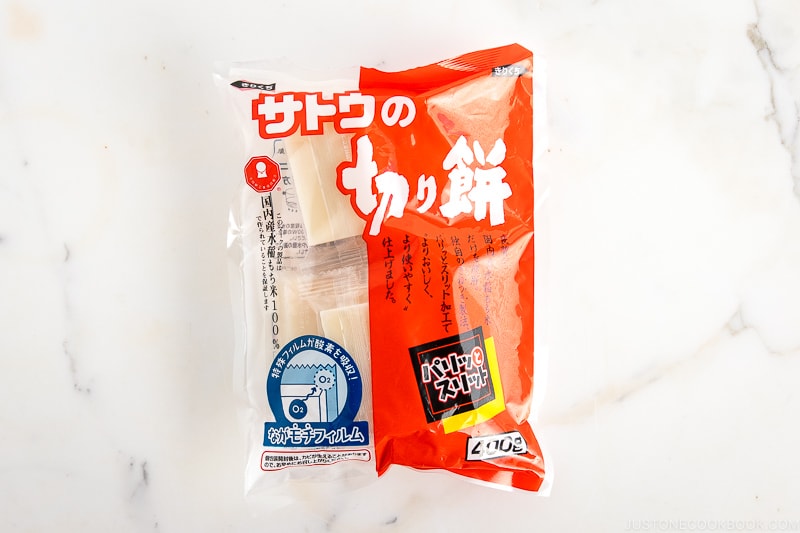
How to Make Kinako Mochi
Preparation
Step 1 – Make the sweetened kinako mixture. Mix together the kinako (roasted soybean flour) and sugar in a bowl. Set it aside while you boil the mochi.
Cooking
Step 2 – Boil the mochi. Bring a medium pot of water to a rolling boil. Then, add the kiri mochi to the pot. Simmer and turn the mochi occasionally until it’s soft and cooked through. Remove with a slotted spoon or fine-mesh scoop.
Assemble
Step 3 – Flavor the mochi with the sweetened kinako. Dredge the hot mochi thoroughly in the kinako mixture. Serve while warm on individual plates and enjoy!
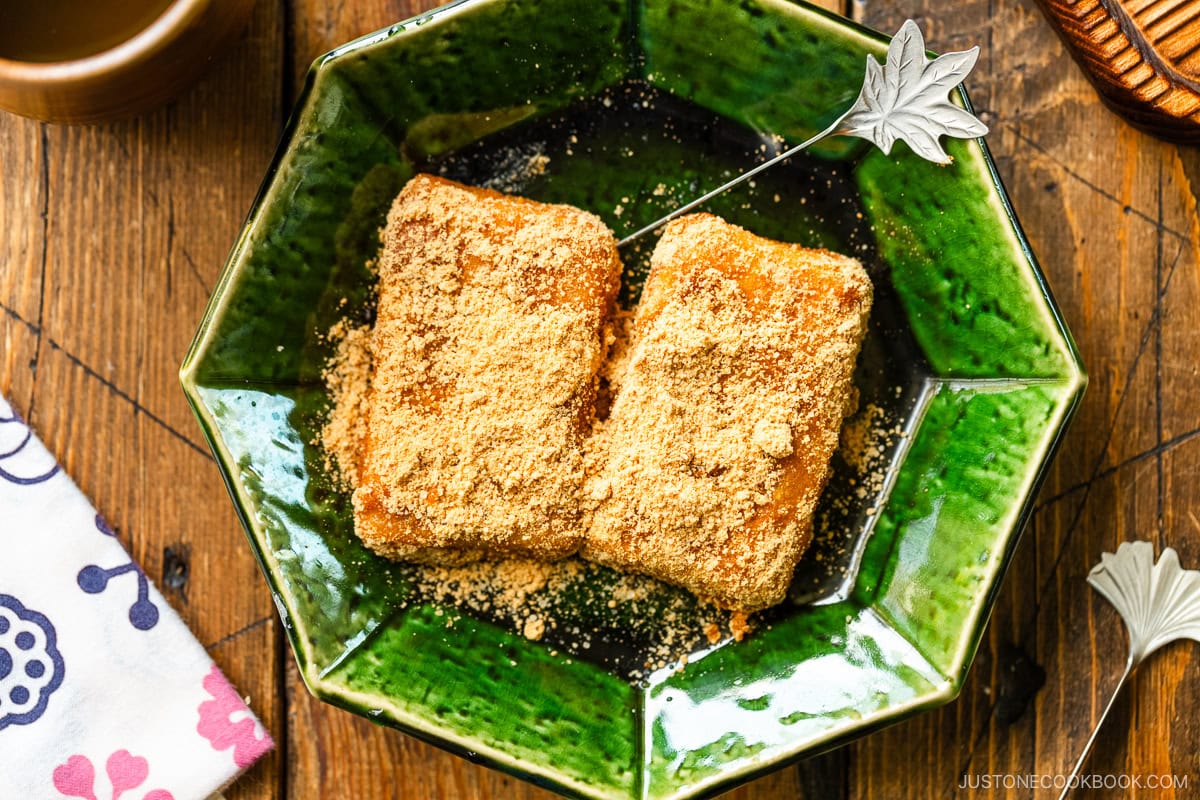
Nami’s Recipe Tips
- Don’t boil the mochi too long – Although the dried kiri mochi feels very hard, it softens up surprisingly quickly when boiled. Gently simmer the mochi until it’s soft all the way through the center, then promptly remove it from the pot. If you boil it too long, it can loose its shape and become gooey and pasty.
- Use fresh when – For the best taste, please use fresh kinako for this recipe. I recommend checking the expiration date on the package.
- Serve while it’s hot – Once it’s heated and flavored, enjoy the kinako mochi immediately. The boiled and chewy rice cake will start to harden as it cools, so serve it hot for the best texture!
Variations and Customizations
This mochi recipe is quite straightforward and simple, yet there are still a few ways you can change things up. Here are my favorite variations that you can try.
- Toast the mochi. My family in Japan loves mochi that’s crispy on the outside, so we always toast it instead of boiling it. Simply heat the kiri mochi on the rack of a toaster oven until puffed up and slightly golden brown. Smash it with your hand, dip it in hot water, and dredge it in the sweetened kinako. You can also grill it over an open flame, pan-fry it in a dry pan, or microwave it.
- Use freshly pounded rice cakes. Please try fresh mochi if you have the chance. To enjoy it fresh, my family usually attends a mochi-pounding event during Japanese New Year. Some folks make it at home with a special Japanese mochi-pounding machine or a Japanese bread maker with a mochi-pounding option. You also can make it homemade with my recipe How to Make Mochi with a Stand Mixer.
- Make it with shiratama dango. These small and dimpled rice flour dumplings are delightful when generously dusted with sweetened kinako! If you’ve never tried these dango, I would highly recommend them. They are soft, white mochi-like balls that are chewy yet bouncy and springy compared to plain mochi. They are easy to make at home with my Shiratama Dango recipe.
- Try it with black soybean kinako. Dredge your mochi in kinako powder made from black soybeans kuromame kinako) if you can find it in a Japanese grocery store or online. It has a slightly sweeter and richer flavor and more nutrients than standard kinako.
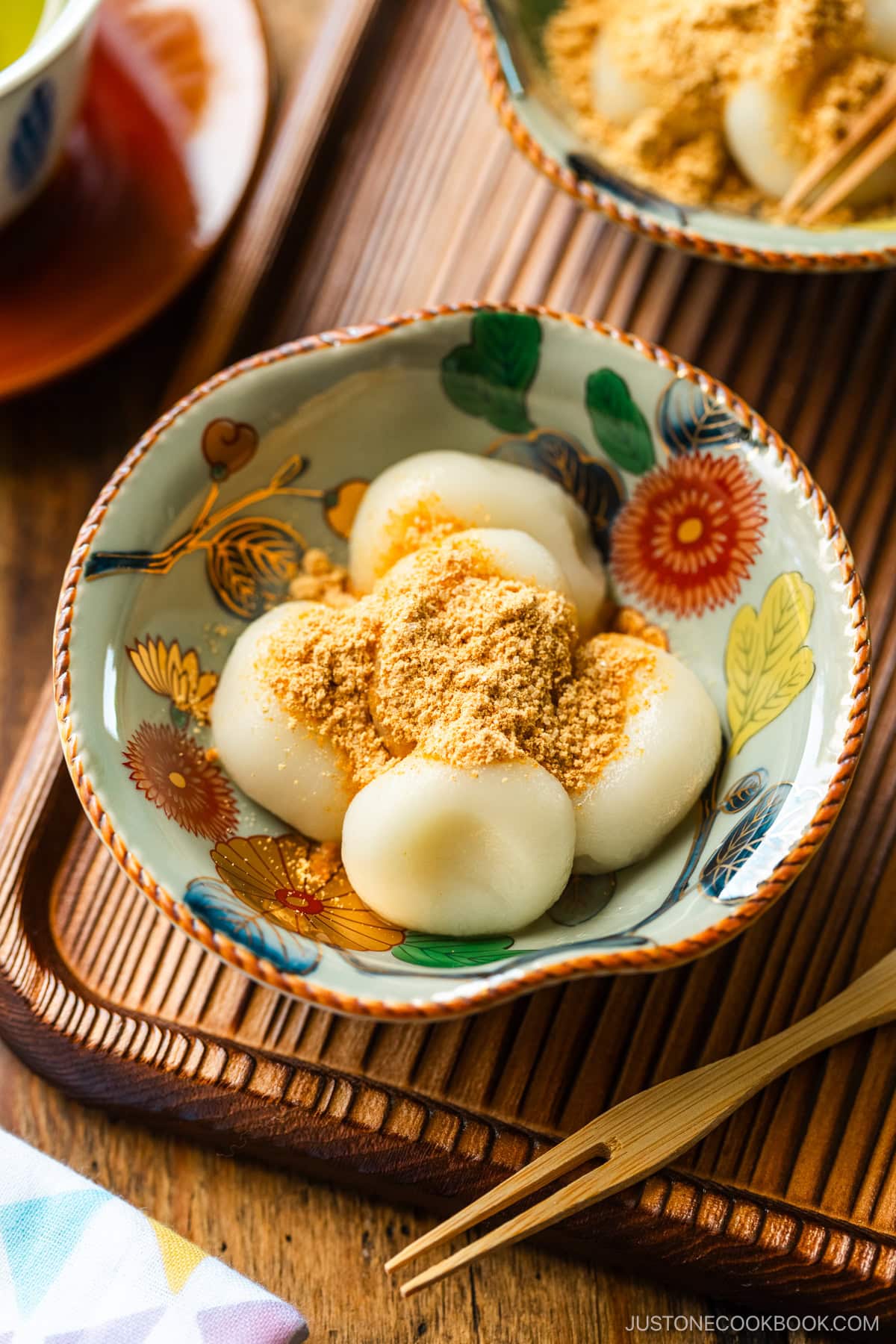
What to Serve with Kinako Mochi
Kinako mochi is a filling and satisfying snack to serve during Japanese New Year, but it’s also a yummy treat to enjoy throughout the year. Below are my serving suggestions.
- With a hot beverage – Learn How to Make Japanese Green Tea or make my Kinako Milk and pour a cozy hot drink to accompany your kinako mochi.
- With other savory and sweet mochi – Growing up, I used to eat plain mochi with three different flavors on New Year’s Day! See how to make savory isobeyaki and sweet red bean paste (anko) mochi along with a toasted version of kinako mochi in my post How to Enjoy Japanese Mochi.
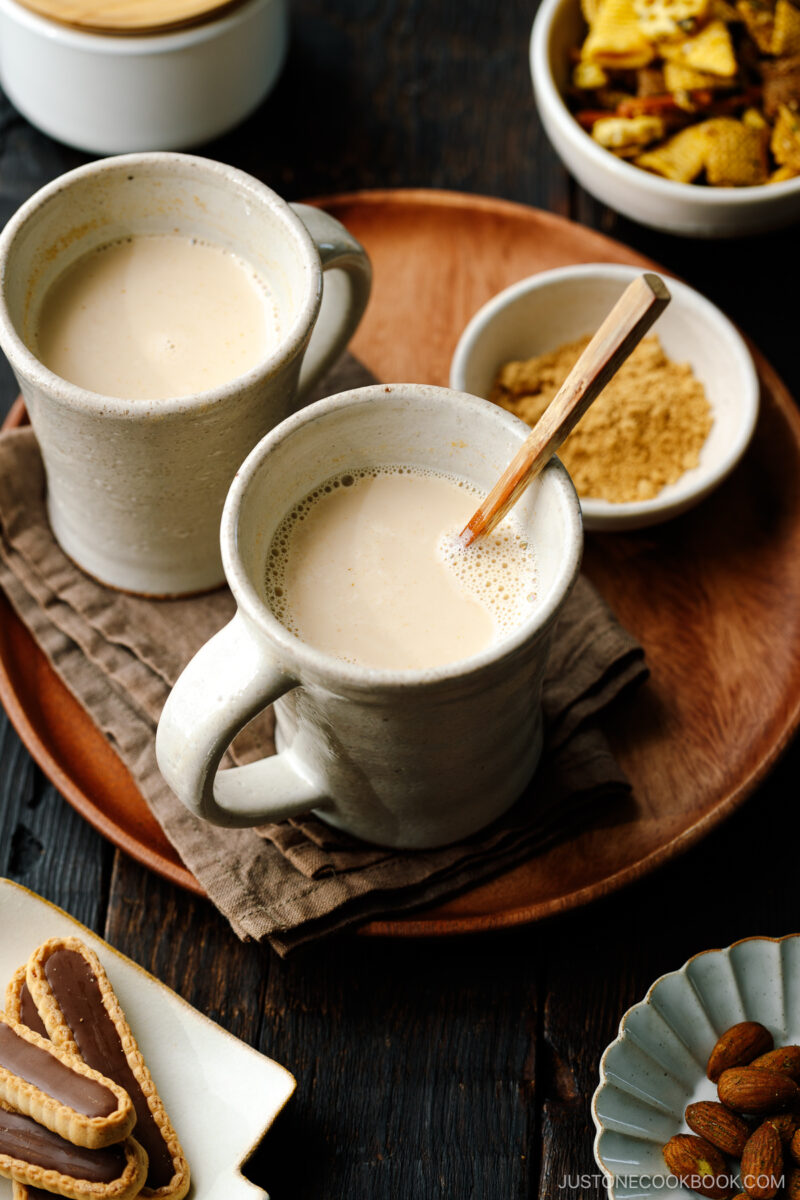
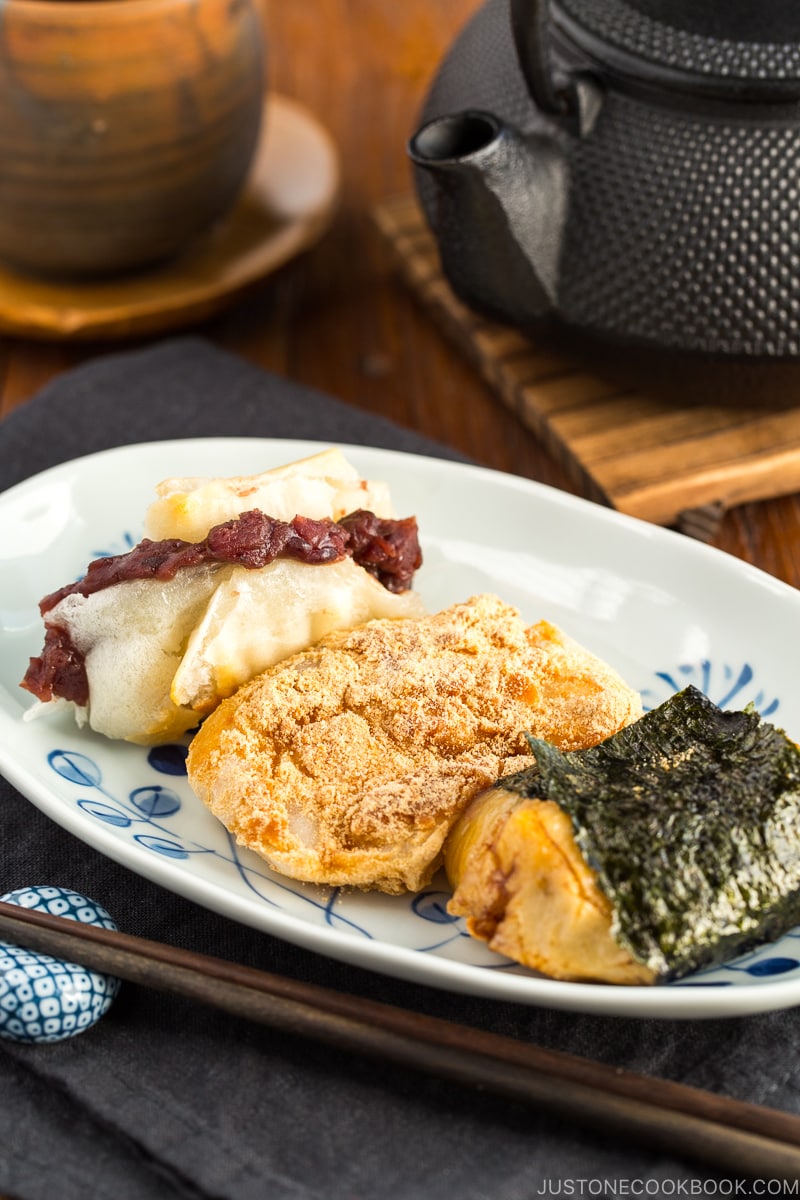
Storage Tips
To store: It’s best to cook the mochi right before you serve it, as it will harden as it cools and the kinako mixture will loose its powdery consistency. I recommend preparing only as much kinako mochi as you can consume.
Frequently Asked Questions
I highly recommend trying homemade shiratama dango (白玉団子). These small and dimpled dumplings are made with glutinous rice flour/sweet rice flour called shiratamako (this is not the same as mochiko flour). They are slightly chewy but lighter and springier in texture than plain mochi. I like to generously sprinkle the sweetened kinako over a bowl of these soft and white mochi-like balls. They are easy to make at home following my Shiratama Dango recipe instructions.
You may have boiled it too long. I suggest gently simmering the mochi and turning it occasionally to promote even cooking. Remove the mochi from the pot as soon as it has softened in the center.
I use 1 part sugar for every 2 parts kinako in this recipe for a classic taste. You can reduce the sugar to your preference, if you wish.
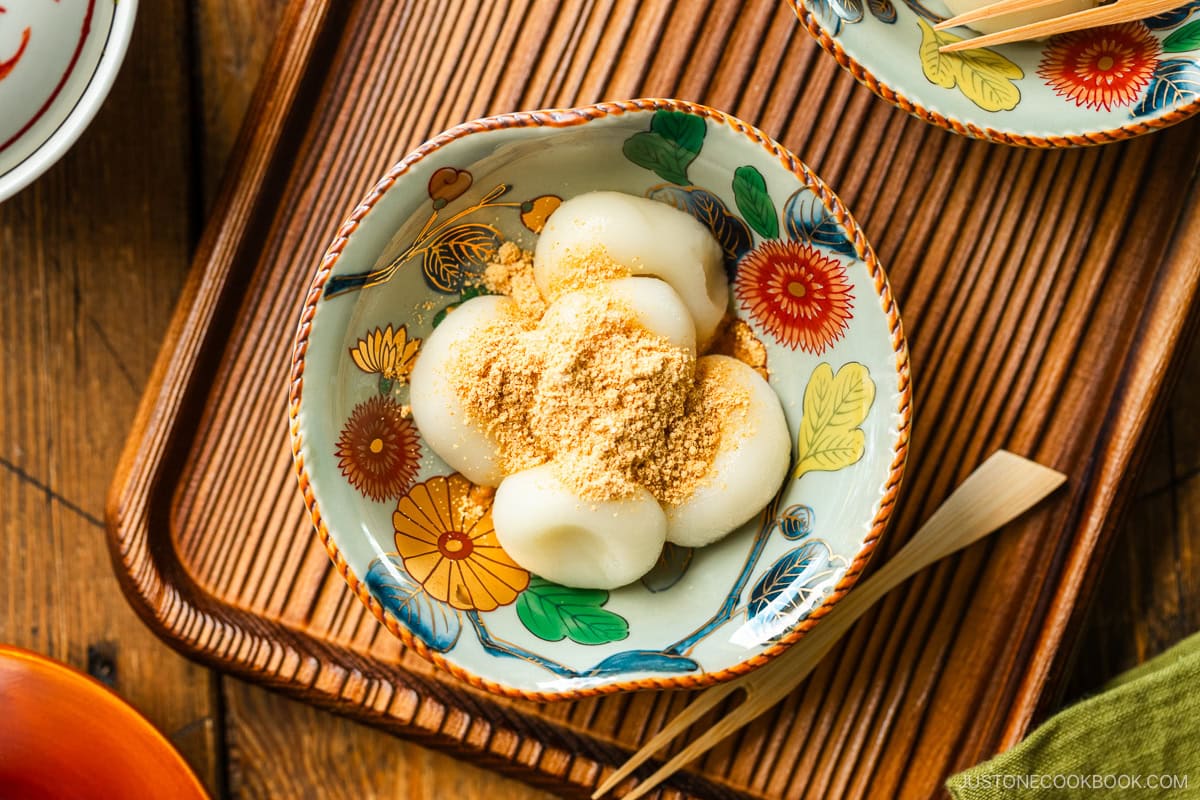
More Mochi Recipes
If you love this Kinako Mochi recipe, you’re in for a treat with these irresistible sweet mochi recipes.
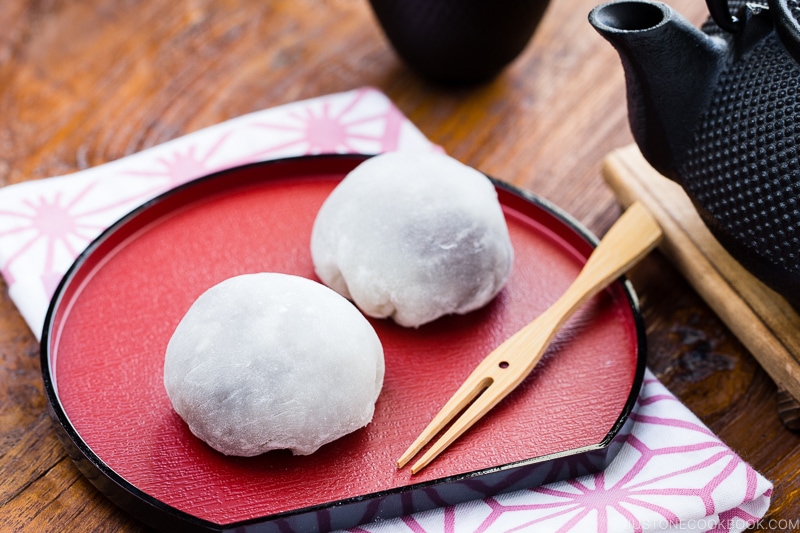
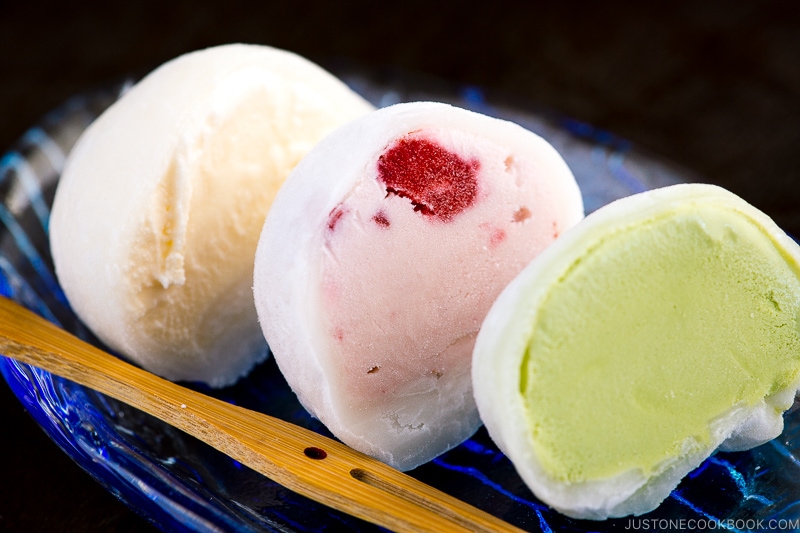
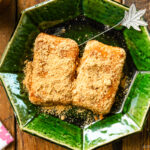
Prevent your screen from going dark
To Make the Kinako Mixture
To Heat the Mochi
-
Bring a medium pot of water to a boil. Once boiling, add 4 Japanese rice cake (mochi) to the pot.
-
Gently simmer the mochi, turning them occasionally with a spoon for even cooking. When the mochi is soft to its center, promptly remove it from the pot and transfer to a plate.
To Store
-
It’s best to cook the mochi right before you serve it, as the mochi will harden as it cools and the kinako mixture will loose its powdery consistency. I recommend preparing only as much kinako mochi as you will consume.
Calories: 274 kcal · Carbohydrates: 60 g · Protein: 6 g · Fat: 1 g · Saturated Fat: 0.2 g · Polyunsaturated Fat: 1 g · Monounsaturated Fat: 0.3 g · Sodium: 1 mg · Potassium: 176 mg · Fiber: 1 g · Sugar: 59 g · Vitamin A: 8 IU · Calcium: 14 mg · Iron: 0.5 mg
©JustOneCookbook.com Content and photographs are copyright protected. Sharing of this recipe is both encouraged and appreciated. Copying and/or pasting full recipes to any website or social media is strictly prohibited. Please view my photo use policy here.

